[PL]
1. Zamek w Malborku
Największy gotycki zamek na świecie. Wzniesiony w kilku etapach od 1280 do poł. XV w. przez zakon krzyżacki. Początkowo konwentualny i siedziba komtura, w latach 1309–1457 siedziba wielkich mistrzów zakonu krzyżackiego i władz Prus Zakonnych, w latach 1457–1772 rezydencja królów Polski, od 1466 siedziba władz Prus Królewskich, od 1568 siedziba Komisji Morskiej, w 1772 zajęty przez administrację Królestwa Prus i zdewastowany w latach 1773–1804, rekonstruowany w latach 1817–1842 i 1882–1944, zniszczony w 1945, ponownie rekonstruowany od 1947; w 1949 wpisany do rejestru zabytków, w 1994 uznany za pomnik historii, w 1997 wpisany na listę światowego dziedzictwa UNESCO, od 1961 siedziba Muzeum Zamkowego w Malborku.
Zespół zamkowy w Malborku obejmuje:
- Zamek Wysoki, czworoboczny, z dziedzińcem otoczonym krużgankiem, kościołem Najświętszej Maryi Panny z kaplicą grobową św. Anny, gdaniskiem, wieżami Kleszą i Wróblą
- Zamek Średni, wzniesiony w miejscu byłego przedzamcza, trójboczny, z rozległym dziedzińcem otwartym ku Zamkowi Wysokiemu (oddzielonym od niego murem i fosą), z kaplicą św. Bartłomieja, Wielką Komturią, Infirmerią, Wielkim Refektarzem, Pałacem Wielkich Mistrzów, Refektarzem Letnim, Refektarzem Zimowym, wieżą Kurzą Nogą
- Zamek Niski (Przedzamcze), z Karwanem, kaplicą św. Wawrzyńca oraz szeregiem zabudowań gospodarczych.
Zamek w Malborku jest jednym z najznakomitszych przykładów średniowiecznej architektury obronno-rezydencyjnej w Europie
[EN]
1. Castle in the Malbork
The largest Gothic castle in the world. Erected in several stages from 1280 to mid. XV in. By the Teutonic Order. Initially, the convent and the commander headquarters, in the years 1309-1457 the seat of the Grand Masters of the Teutonic Order and the authorities of Prussian Prussia, in 1457-1772 the residence of the kings of Poland, from 1466 the seat of the Royal Prussia, from 1568 the seat of the Maritime Commission, in 1772 occupied by the administration of the Kingdom of Prussia and devastated in 1773-1804, reconstructed in 1817-1842 and 1882-1944, destroyed in 1945, reconstructed again from 1947; in 1949 entered into the register of monuments, in 1994 declared a historical monument, in 1997 inscribed on the UNESCO World Heritage list, from 1961 the seat of the Castle Museum in Malbork.
The castle complex in Malbork includes:
- High, four-sided castle, with a courtyard surrounded by a cloister, the church of the Blessed Virgin Mary with a burial chapel of Saint. Anna, gdanisko, Klesza and Sparrow towers
- The Middle Castle, erected in the place of the former ward, three-sided, with a large courtyard open towards the High Castle (separated from it by a wall and a moat), with the chapel of St. Bartłomiej, Great Command, Infirmary, Great Refectory, Grand Masters' Palace, Summer Refectory, Winter Refectory, Kurza Noga Tower
- The Low Castle (Before the Castle), with Karwan, the chapel of St. Wawrzyńca and a number of farm buildings. The Malbork Castle is one of the finest examples of medieval defensive-residential architecture in Europe


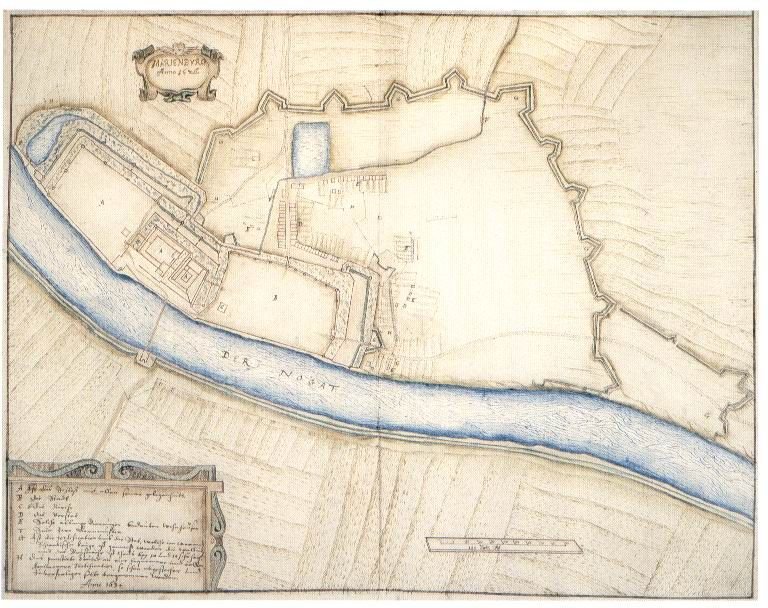
[PL]
2. Hala Stulecia we Wrocławiu
Hala widowiskowo-sportowa znajdująca się we Wrocławiu, na osiedlu Zalesie, w parku Szczytnickim. Wzniesiona w latach 1911–1913 według projektu Maxa Berga, w stylu ekspresjonistycznym.W 2006 roku hala została uznana za obiekt światowego dziedzictwa UNESCO. Wpisana do rejestru zabytków w 1962 oraz ponownie w 1977, wraz z zespołem architektonicznym obejmującym m.in. Pawilon Czterech Kopuł, Pergolę i Iglicę.Obecnie hala i jej okolice są bardzo licznie odwiedzane przez zwiedzających nie tylko ze względu na samą halę, ale także na bliskość Pergoli z Fontanną Multimedialną, Ogrodem Japońskim oraz zoo.
[EN]
2. Centennial Hall
A sports and entertainment hall located in Wrocław, at the Zalesie estate, in Szczytnicki Park. Built in 1911-1913 according to the design of Max Berg, in the expressionist style. In 2006, the hall was declared a UNESCO World Heritage Site. Entered in the register of monuments in 1962 and again in 1977, together with an architectural team including Pavilion of Four Domes, Pergola and Spire. Currently, the hall and its surroundings are very often visited by visitors not only because of the hall itself, but also the proximity of the Pergola with the Multimedia Fountain, the Japanese Garden and the zoo.

[PL]
3. Kopalnia soli w Wieliczce
Kopalnia soli kamiennej, w Wieliczce pod Krakowem. Od XIII wieku do 1772 wspólnie z kopalnią soli „Bochnia” wchodziła w skład żup krakowskich. Sole wydobywane w kopalni pochodzą z miocenu.W 1976 roku kopalnia wpisana została do krajowego rejestru zabytków. Dwa lata później wpisana przez UNESCO na pierwszą Listę światowego dziedzictwa. W 1989 roku Kopalnia Soli „Wieliczka” poszerzyła Listę Światowego Dziedzictwa Zagrożonego, z której została skreślona w 1998 roku. Od 1994, to także pomnik historii Polski. 30 czerwca 1996 roku zaprzestano całkowicie eksploatacji złoża. Kopalnia soli Wieliczka w 2007 r. w plebiscycie „Rzeczpospolitej” została uznana za jeden z siedmiu cudów Polski, zdobywając największą liczbę głosów.
W 2006 roku kopalnię odwiedziło 1 065 857 gości, 58% odwiedzających stanowili obcokrajowcy. Spośród nich najwięcej było Brytyjczyków – ponad 57 tysięcy i Niemców – ponad 50 tysięcy.W 2015 roku podziemia kopalni zwiedziło 1390 tys. gości, a 156 tys. skorzystało z tężni solankowej. Pod ziemią zorganizowano ponad 400 imprez. Przychody wyniosły blisko 166 mln zł; od 2009 wzrosły one o ponad 62%. W 2015 zabezpieczono 20 komór i 1,5 km chodników. Ogółem prace ratownicze zabytkowych rejonów kopalni oraz likwidacja części niezabytkowych pochłonęły do tej pory 100 mln zł
[EN]
3. Salt Mine in the Wieliczka
A rock salt mine in Wieliczka near Krakow. From the 13th century to 1772, together with the "Bochnia" salt mine, it was part of the Cracow Salt Mines. Salts extracted in the mine come from the Miocene. In 1976, the mine was entered into the national register of monuments. Two years later, it was entered by UNESCO as the first World Heritage List. In 1989, the Wieliczka Salt Mine expanded the World Heritage List, from which it was deleted in 1998. Since 1994, it is also a monument to the history of Poland. On June 30, 1996, the deposit was completely abandoned. Wieliczka Salt Mine in 2007 in the Rzeczpospolita plebiscite was recognized as one of the seven wonders of Poland, winning the largest number of votes.
In 2006, the mine was visited by 1 065 857 guests, 58% of visitors were foreigners. Of these, the most were the British - over 57 thousand and Germans - over 50 thousand. In 2015, the underground mine visited 1390 thousand. guests, 156 thousand benefited from graduation towers. More than 400 events were organized underground. Revenues amounted to nearly PLN 166 million; since 2009, they have increased by more than 62%. In 2015, 20 chambers and 1.5 km of pavements were secured. In total, the rescue work of historic mine regions and the liquidation of non-tidal parts have so far consumed PLN 100 million
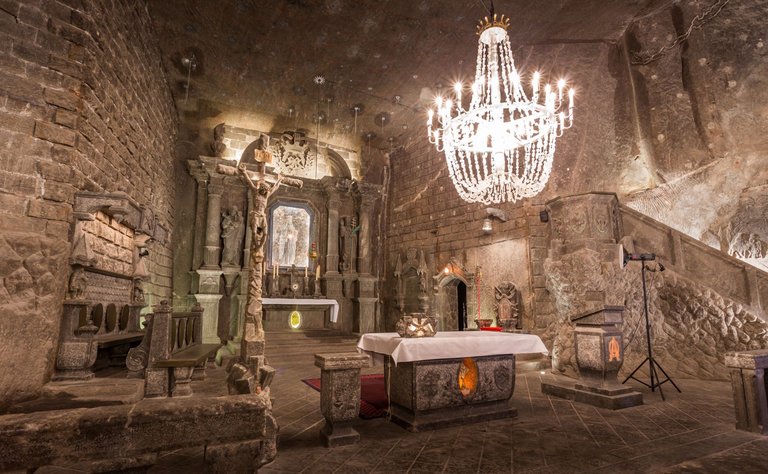
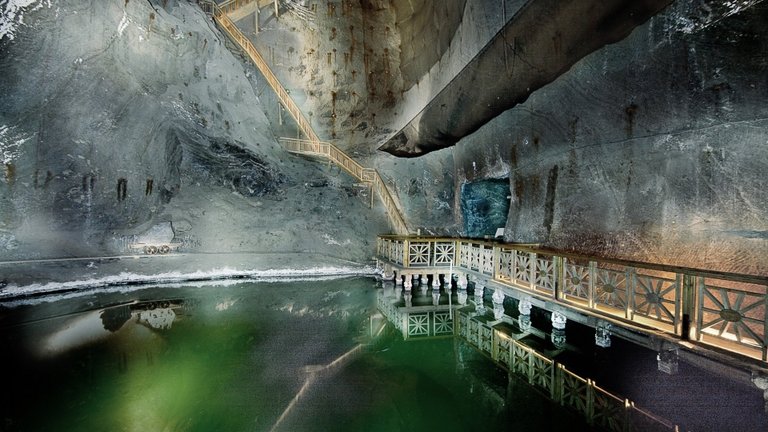
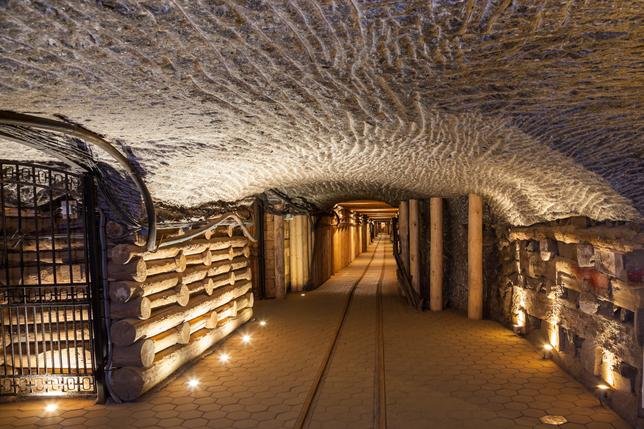

[PL]
4. Spodek Katowice
Hala widowiskowo-sportowa wybudowana w latach 1964–1971 , która dopuszcza około 12 tysięcy miejsc siedzących. Idea utworzenia hali widowiskowo-sportowej na terenie Katowic pojawiła się już w 1955. Początkowo obiekt miał znajdować się na obrzeżach miasta, na terenie Wojewódzkiego Parku Kultury i Wypoczynku.
Pierwsze prace budowlane rozpoczęły się w 1964, jednak przerwano je na 18 miesięcy z powodu podejrzeń o błędy konstrukcyjne, które nie potwierdziły się w rzeczywistości. W 1969 oddany do użytkowania został pierwszy budynek kompleksu – przylegająca do Spodka hala lodowa.
Całość obiektu ukończono wiosną 1971, a oficjalnie oddano do użytku 9 maja 1971. Na inwestycję przeznaczono 200 mln zł, jednak ostateczny koszt wyniósł ok. 800 mln zł.
[EN]
4. Saucer Katowice
A sports and entertainment hall built in 1964-1971, which allows about 12,000 seats. The idea of
creating a sports and entertainment hall in Katowice appeared already in 1955. Initially, the facility was to be located on the outskirts of the city, within the area of
the Provincial Park of Culture and Recreation.
The first construction works began in 1964, but they were discontinued for 18 months due to suspected construction errors, which were not confirmed in reality. In 1969, the first building of the complex was put into use - the ice hall adjacent to Spodek.
The whole building was completed in the spring of 1971, and officially opened on May 9, 1971. The investment was allocated PLN 200 million, but the final cost was about PLN 800 million.
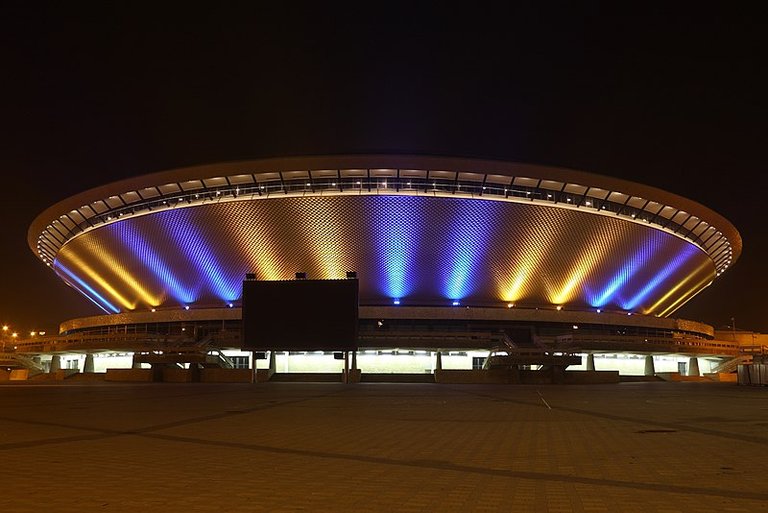


[PL]
5. Pałac Kultury i Nauki
Najwyższy budynek w Polsce znajdujący się w Śródmieściu Warszawy na placu Defilad 1. Właścicielem gmachu jest miasto stołeczne Warszawa. Od 2007 gmach znajduje się w rejestrze zabytków. Pałac stanowił „dar narodu radzieckiego dla narodu polskiego”. Wybudowany w latach 1952–1955 według projektu radzieckiego architekta Lwa Rudniewa, budynek inspirowany jest moskiewskimi drapaczami chmur, które z kolei inspirowane są amerykańskimi wieżowcami art déco. Architektonicznie jest mieszanką socrealizmu i polskiego historyzmu. Jest najwyższym budynkiem w Polsce. Razem ze wspornikiem antenowym, będącym integralną częścią iglicy, ma wysokość 237 metrów
[EN]
5. Palace of Culture and Science
The tallest building in Poland located in the Śródmieście district of Warsaw at Plac Defilad 1. The owner of the building is the capital city of Warsaw. Since 2007, the building is located in the register of monuments. The palace was a "gift of the Soviet people for the Polish nation." Built in 1952-1955 according to the design of the Soviet architect Lew Rudniewa, the building is inspired by Moscow skyscrapers, which in turn are inspired by American art deco skyscrapers. Architecturally, it is a mix of socialist realism and Polish historicism. It is the tallest building in Poland. Together with the antenna bracket, which is an integral part of the spire, it has a height of 237 meters

Thank you again for your time, see you!
Źródło:
www.wikipedia.org
Woff, woff!
Hello @passio, Nice to meet you!
I'm a guide dog living in KR community. I can see that you want to contribute to KR community and communicate with other Korean Steemians. I really appreciate it and I'd be more than happy to help.
KR tag is used mainly by Koreans, but we give warm welcome to anyone who wish to use it. I'm here to give you some advice so that your post can be viewed by many more Koreans. I'm a guide dog after all and that's what I do!
Tips:
Unfortunately, Google Translate is terrible at translating English into Korean. You may think you wrote in perfect Korean, but what KR Steemians read is gibberish. Sorry, even Koreans can't understand your post written in Google-Translated Korean.
I sincerely hope that you enjoy Steemit without getting downvotes. Because Steemit is a wonderful place. See? Korean Steemians are kind enough to raise a guide dog(that's me) to help you!
Woff, woff! 🐶
I takie wpisy lubię, zwłaszcza, że widzę tutaj Spodek i Halę Stulecia czyli czołówkę moich ulubionych budynków.
P.S. Zapraszam na tag #pl-architektura
dzieki wielkie juz dodałem, Pozdrawiam
kr-guide!